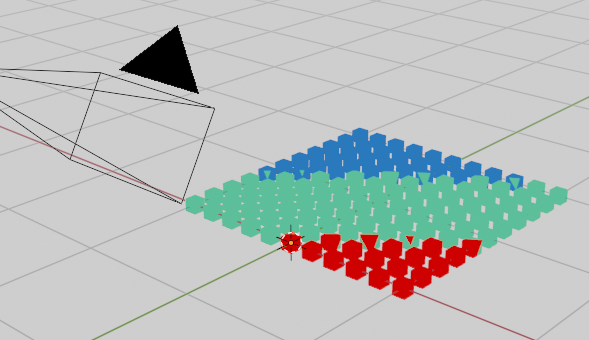at Video around 10:52
(I'm using 3.6.7 LTS.) If I use input "Camera Data: View Distance", I get odd results. For example, in Ortho:Left view, if I pan the 3D viewport the values seem to stay put while the objects move. They look kind of spherical. The effect is more obvious if stepped a ramp with Constant interpolation is used.
If instead I use "Geometry: Position: Y" (and adjust the range), I get the desired results. Of course it is decoupled from the camera position.
Am I missing something?
Hi, I did some further testing and confirmed a suspicion (surprising): the distance value appears to be relative to the viewport rather than the camera. Two test examples are below. (You need to multiply/add, differently, to get the ramp in range.) This explains the bizarre behavior I was experiencing. I don't think I have missed a setting somewhere. Perspective/orthographic seems to have no effect.
For a render, I guess it wouldn't matter. But it does make setting up the material more difficult and confusing.


Hi ![]() techworker1 ,
techworker1 ,
The Viewport is considered a Camera, when not in Camera View (even if there isn't a Camera in the Scene):

So "Camera Data: View Distance" is effectively the distance from your eyes to objects in the scene (viewport zoom in/out affects it too).
For the purposes of the landscape exercise, Position seems more practical.
The Y Position of the Geometry is 'absolute' and doesn't change when moving the Camera (or changing the view in the Viewport)...
For a static Camera this can be totally fine (depending on the Cameras orientation). View Distance would be more natural and View Z Depth is a bit like 'something in between' those two.
You can use whichever you want, as long as you're happy with the result.
Great exploration and testing in this thread ![]() techworker1! Martin is absolutely right: Use whichever method you prefer. As with most 3D / creative workflows, there's never a singular "right way". Keep up the good work!
techworker1! Martin is absolutely right: Use whichever method you prefer. As with most 3D / creative workflows, there's never a singular "right way". Keep up the good work!